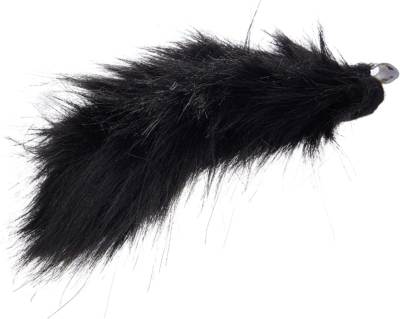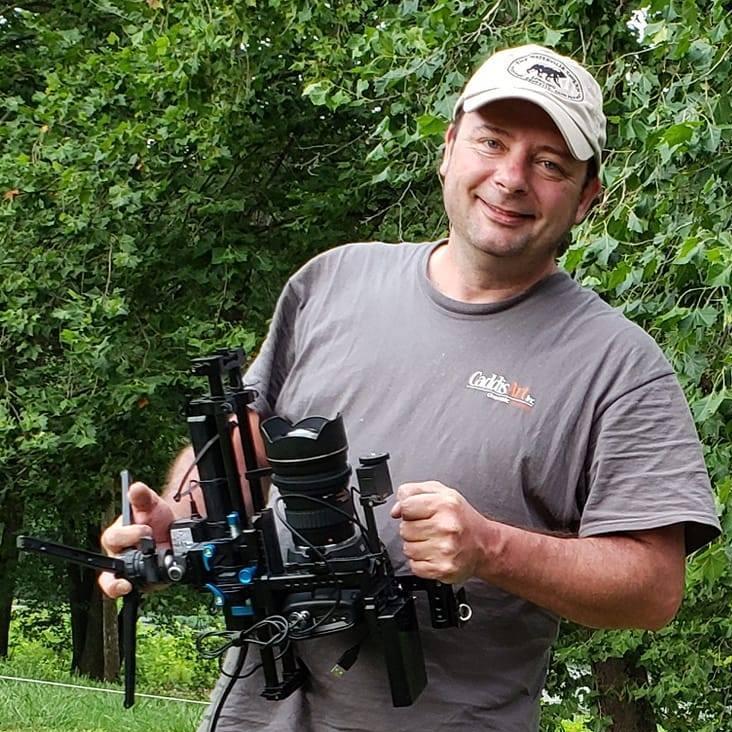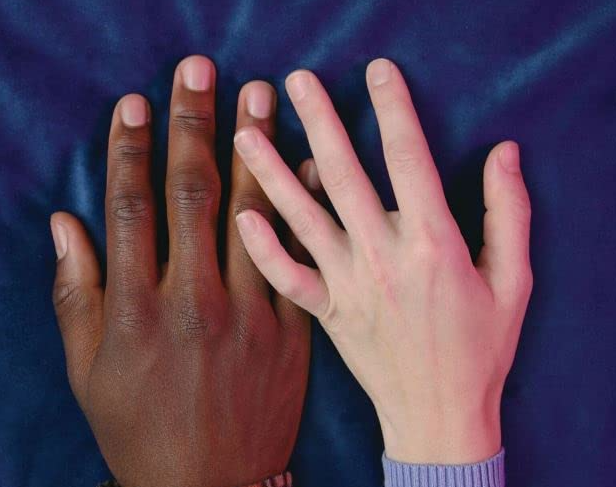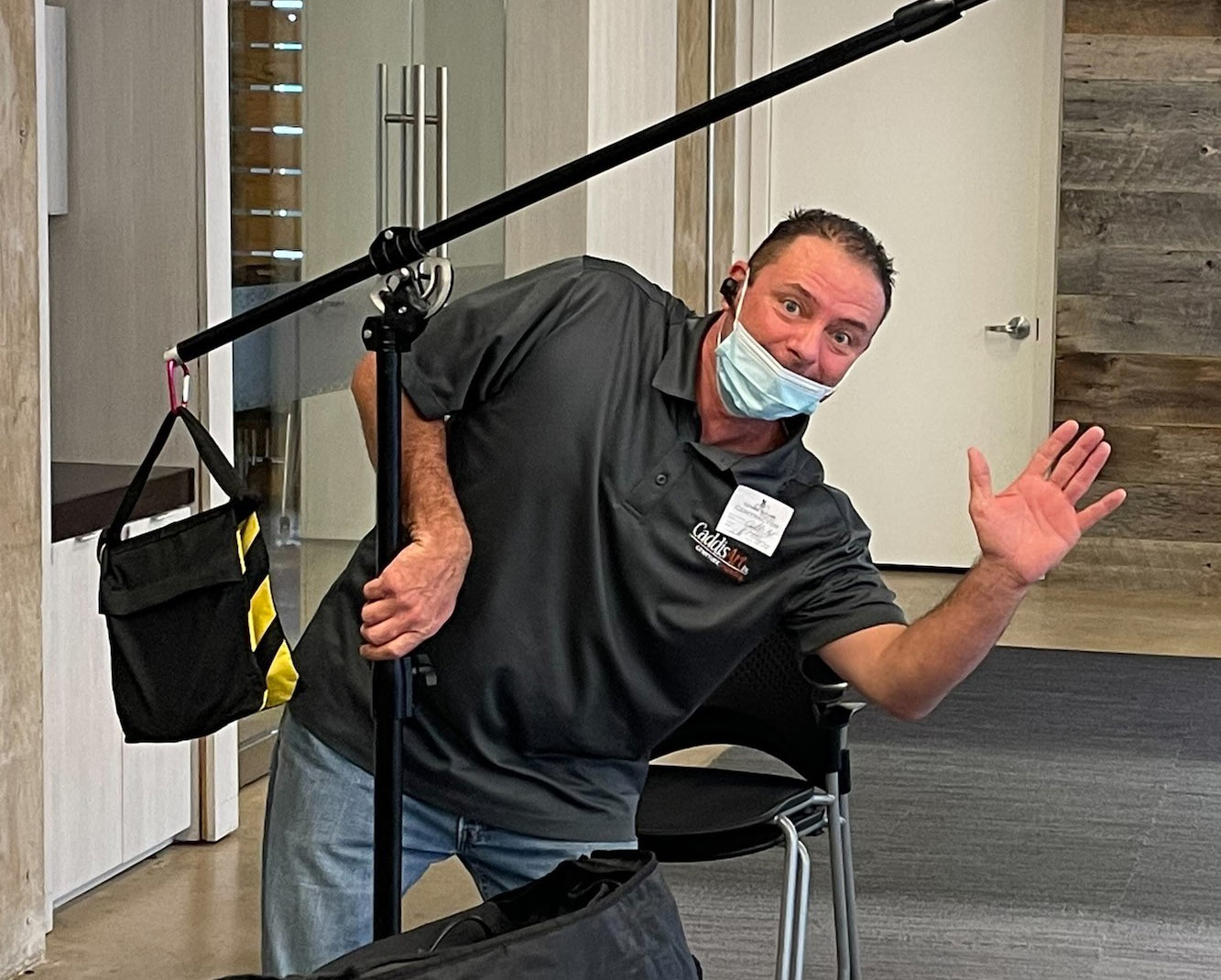
It’s not all just about the visuals
It’s True: Audio is More Important than Video Quality in your Production.
Written by Robert Blanda, President & Creative Director, CaddisArt, Inc.
As a technical video producer & director, I’ve admittedly made some pretty serious mistakes in my career. A few of them were so devastating that we had to re-shoot or completely lose the project. I hope that my mistakes can teach you a few lessons when hiring a video production firm. After all, we all make mistakes – but we learn from them. This is a little information to help you understand why audio quality is important than image quality. It may sound counter-intuitive, so it deserves an explanation.
Don’t get me wrong, video quality is important. In order to keep up with what’s being produced today, you have to make sure you’re using the best video equipment you can afford. Cameras, lenses, lights, locations and the know-how will ensure great visuals for your production.
Sound, on the other hand is extremely important. Think of it this way – you’re watching a music video and the visuals are amazing, the cuts are dramatic and the depth of field is shallow, creating a stunning thing of beauty. But here’s the caveat; the audio quality is poor and you can’t hear the vocals clearly. Adversely, if you were watching the same video with ‘not-so-good’ visuals but the sound was amazing, you’d always pick the latter. Why? The audio (especially for music videos) is engulfing.
And remember, your ears don’t blink. Think about that for a minute.
There are even some cases that I’ve seen where a producer will only use stock video and animations for the visuals and concentrate exclusively on great voice-overs and clean audio beds. Hey, if it works – it works.
In other cases where the audio was not recorded well, the editors will decide to scrap the audio portion and make the production into mostly B-Roll footage whereas they add narrative and sound effects.
Your Sound Equipment

Audio Technica Studio Mic with Pop Filter
Having high quality microphones and sound recording equipment is critical, especially when you’re shooting on location. I also tend to lean toward ‘wired’ microphones before going wireless. It’s also important to record audio in two separate recorders (one can be the camera) in case of a problem. You don’t want to lose audio – that’s for darn sure.
High quality wired lavaliere microphones are usually my go-to for interviews, presentations, and some scripted productions. However, these can be cumbersome or inconvenient at times. When this is the case, I’ll move over to the wireless or have a boom operator at the ready.
When using any microphone outdoors, be sure to use a wind muff. They may look funny, but they certainly do the job. If you’re in the studio and recording a voice-over, be sure to use a pop filter.
Headphones are key as well. Look for ‘reference’ headphones, rather than audiophile cans. Stay away from ‘transparent’ or open back headphones – this allows sound to leak into your ears when you’re trying to hear ONLY what the microphone(s) hear. I’ve seen decent sets of audio reference headphones for under $100 that perform very well. It’s not always about the price, it’s about having the right headphones for the job. Ask any recording artist behind his or her mixing console. They’ve got the story and will probably love to tell you.
Additionally, when recording with more than one microphone, separate your audio into separate channels. Do not, under any circumstance, flow them into a mono channel. This is poor practice and your editors will call you mean and nasty things. If you only have a stereo recorder, be sure to pan one channel to the left and the other to the right. This way, each microphone can be isolated. Also, the use of in-line effects during your recording is bad practice. Get the best audio directly from the microphone and let the editors handle compression, limiters, etc in post.

Microphone wind muff for eliminating wind noise
Finally, while music (an audio bed) is a nice touch to your final edit, keep it subtle unless otherwise warranted. Use audio ducking (when the music lowers as someone is talking, then rises when they aren’t) when and where you can in your timeline.
In closing, I hope these little tips help you on your way to making a great production. If you ever have questions or would like some information, please remember that “Advice Is Always Free” at CaddisArt. Call me personally and I will guide you.

Robert Blanda
President & Creative Director
CaddisArt Cinematic Marketing
Email • (856) 719-0273 x100
Robert Blanda is a marketing and media professional with more than 30 years of experience, He’s worked for IBM®, Tandy Corporation®, the Philadelphia Streets Department, Beachwood Studios®, Air Products®, Corestates Bank, Merrill Lynch and many others. When he’s not creating in Adobe Premiere®, Photoshop or DaVinci Resolve®, you can find him creating new automated processes to help CaddisArt, Inc. run smoother and more efficient. He is currently in the process of filming and directing a feature-length documentary for Amazon Prime® scheduled for release in early 2022. Robert is proud of his two college-age boys and enjoys that they are following in his footsteps.

“CaddisArt did a great job helping me to get my business going in the right direction. I am not used to this sort of customer service!”

CaddisArt has been managing our non-profit military history organization’s social media marketing needs for the past year and has done so in the most exemplary manner. Their professional staff has met our communication and promotional requirements most admirably, and with the highest customer service attention. we highly recommend their services and expertise in this regard.




